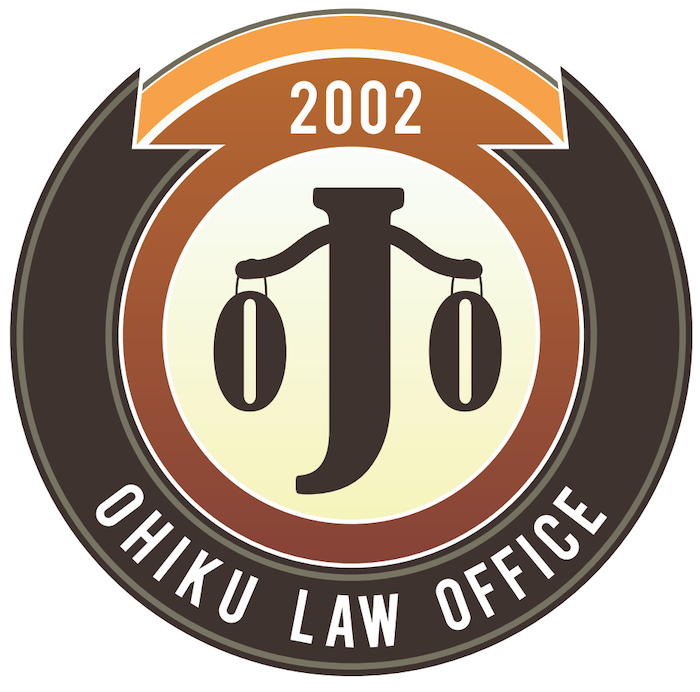5 common high net worth divorce challenges
5 common high net worth divorce challenges
 If you have assets totalling more than one million dollars and are considering divorce, you may face certain challenges during the process. Your high-net-worth status means there is a lot at stake in your divorce, but you are also likely in a position to hire an excellent divorce attorney with experience helping individuals like you navigate this process and protect your interests.
If you have assets totalling more than one million dollars and are considering divorce, you may face certain challenges during the process. Your high-net-worth status means there is a lot at stake in your divorce, but you are also likely in a position to hire an excellent divorce attorney with experience helping individuals like you navigate this process and protect your interests.
At The Ohiku Law Office, we help high net worth individuals in Milwaukee and southeastern Wisconsin with expert divorce law, dispute resolution, custody, and other legal issues. Whether you are considering divorce and have questions on your mind or are ready to hire a lawyer to get the process started, we are here for you.
We do everything we can to support you during divorce. Those with considerable assets tend to face certain challenges that we do everything we can do ameliorate. Here are the five most common challenges we see high net worth individuals face in the divorce process.
- Division of assets. High net worth couples often have a considerable amount of valuable assets to be divided during divorce. These may include property such as homes, second homes, and commercial property; businesses and related income and debt; investment holdings and multiple retirement accounts; vehicles like cars, boats, or planes; and more. In the State of Wisconsin, all property and debt acquired during the course of a marriage is considered marital property and is divided equally between divorcing spouses. Despite this fact, division of assets is not as simple as drawing a line down the middle. To prepare yourself for the process of dividing assets, take an inventory and consider what you’d like to walk away with and what you are willing to give up. An experienced Milwaukee divorce attorney can help you with this process.
- Evaluating assets. Because high net worth individuals often have a complex asset profile, it can take extra time to ensure proper valuation of what is at stake. This is especially relevant when one or both spouses own or hold partnership in a business. The best thing you can do is hire an expert to value the business so you know what it is worth before going into mediation or court. An outside valuation can also be extremely helpful for retirement and investment accounts, stocks, and property. Make sure to hire someone who will be willing to testify to the value of these assets in courts if requested. At Ohiku Law, we can help you identify experts to help you with these valuations.
- Alimony. High net worth couples come in all shapes and sizes. Some couples built their wealth due to both spouses working jobs with a sizable income. In other households, one spouse was the breadwinner and the other stayed home to care for the children. Sometimes inheritance is the basis of a high net worth couple’s wealth. Decisions about spousal support, also known as alimony, can be complex when both spouses are used to a certain lifestyle but may have contributed in different ways to the marriage. Courts consider many factors when making an alimony decision, including how each spouse contributed to the upkeep of the household (income, providing unpaid childcare, etc.), the future earning potential of each spouse, and the resources required for each spouse to maintain a lifestyle that is comparable to their current situation.
- Length of divorce proceedings. High net worth divorces are naturally more complicated because there is more at stake. Often, this complexity translates into lengthier court proceedings due to the time it takes to value assets and determine how to divide up property. Contested divorces or ones where spouses are not able to agree on asset division can make the process even longer. At Ohiku Law, we know mediation and respectful negotiation outside of a courtroom is the best way to expedite a divorce process. We are experts at mediation and dispute resolution and can help you limit the stress of divorce by encouraging a peaceful negotiation process wherever possible.
- Privacy. Some high net worth couples might be concerned about unwanted publicity or public interest around their decision to divorce. While Milwaukee is not a major news hub, the small-town nature of our community can make privacy more difficult. At Ohiku Law, we can support you in protecting your privacy and planning for how to minimize public attention around your divorce.
If you’re considering divorce, the best thing you can do is hire an experienced divorce lawyer with expertise in advocating for high net worth individuals like yourself. I’m Odalo Ohiku. My team at The Ohiku Law Office are dedicated, passionate professionals with combined decades of experience in all areas of divorce and family law. Get your questions answered today – we are standing by to take your call.



 If you have recently decided to divorce your spouse, you are not unique. Divorces have skyrocketed over the past six months, largely due to the fact that couples are spending more time cooped up at home together and have found that their marriage no longer makes them happy. Economic stressors such as job loss, market fluctuation, and disagreements about how to respond to the current health climate are other reasons people are seeking divorce during this time.
If you have recently decided to divorce your spouse, you are not unique. Divorces have skyrocketed over the past six months, largely due to the fact that couples are spending more time cooped up at home together and have found that their marriage no longer makes them happy. Economic stressors such as job loss, market fluctuation, and disagreements about how to respond to the current health climate are other reasons people are seeking divorce during this time.
 If you own a business and are considering divorce, it’s important to be proactive to ensure your business is protected throughout the process. Most business owners spend a significant amount of money, time, and sweat equity getting their business off the ground and work hard every day to ensure that business is successful. During COVID-19, business owners are facing additional challenges to keep their businesses running.
If you own a business and are considering divorce, it’s important to be proactive to ensure your business is protected throughout the process. Most business owners spend a significant amount of money, time, and sweat equity getting their business off the ground and work hard every day to ensure that business is successful. During COVID-19, business owners are facing additional challenges to keep their businesses running.
 Divorce is simply a fact of modern life. Studies estimate between 35 – 40% of marriages end in divorce. If you and your spouse have decided that divorce is the best way forward, you are embarking on what can be an emotional, stressful, and complex legal and personal process that will have profound implications for your life and that of your family.
Divorce is simply a fact of modern life. Studies estimate between 35 – 40% of marriages end in divorce. If you and your spouse have decided that divorce is the best way forward, you are embarking on what can be an emotional, stressful, and complex legal and personal process that will have profound implications for your life and that of your family.
 If you are considering divorce, it’s important to know that Wisconsin is what’s called a marital property state. That means all income, assets, and debts acquired during your marriage are considered marital property and will most likely be divided equally between you and your soon-to-be-ex spouse. Yes, you read that right: debts are also split equally. Examples of debts include credit card debt, medical debt, outstanding mortgage or vehicle loans, and student loan debt.
If you are considering divorce, it’s important to know that Wisconsin is what’s called a marital property state. That means all income, assets, and debts acquired during your marriage are considered marital property and will most likely be divided equally between you and your soon-to-be-ex spouse. Yes, you read that right: debts are also split equally. Examples of debts include credit card debt, medical debt, outstanding mortgage or vehicle loans, and student loan debt.
 Divorce happens every day in Wisconsin and people may decide to end their marriage for many different reasons. However, some people who would like to end their marriage may feel they are unable to due to financial constraints. Particularly in cases where one partner is financially dependent on the other, it may feel like divorce is simply not an option.
Divorce happens every day in Wisconsin and people may decide to end their marriage for many different reasons. However, some people who would like to end their marriage may feel they are unable to due to financial constraints. Particularly in cases where one partner is financially dependent on the other, it may feel like divorce is simply not an option.
 Divorce is a big decision in more ways than one. In my years supporting individuals and families through the divorce process, those who get through the process smoothly have something in common: they’ve thought the decision through thoroughly.
Divorce is a big decision in more ways than one. In my years supporting individuals and families through the divorce process, those who get through the process smoothly have something in common: they’ve thought the decision through thoroughly.
 If you are considering legal separation or divorce, you probably have a lot of questions. The first one might be: what is the difference between a separation and a divorce and which one is right for me?
If you are considering legal separation or divorce, you probably have a lot of questions. The first one might be: what is the difference between a separation and a divorce and which one is right for me?